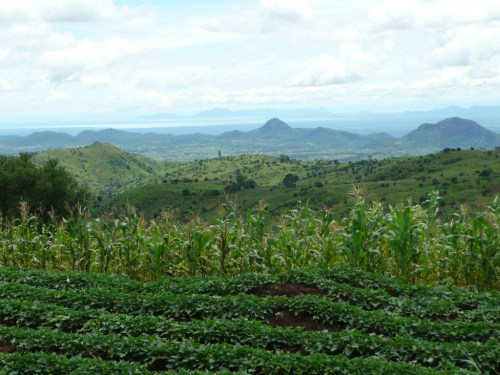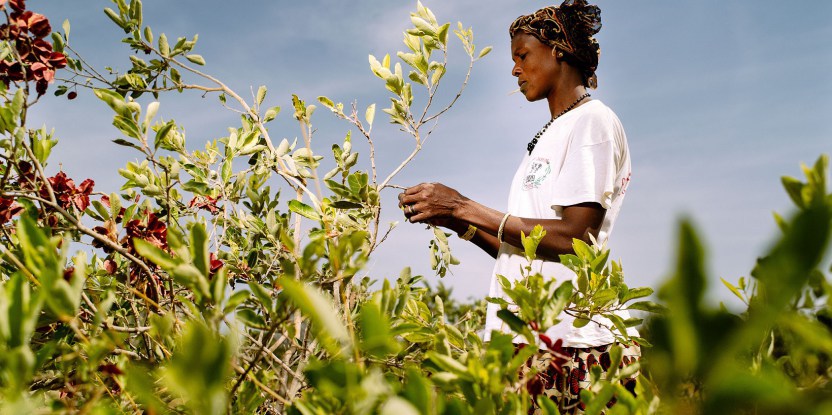
Globalization, population growth and competition for land make it mandatory to consider ecosystems and humans as integrally entwined entities. Not only do human activities transform land, but livelihoods are altered by land transformations.
By opening the lens a little more, we see that landscapes are characterized by human adaptation to surrounding environments and by the reaction of the environment to human influence. Landscapes provide an observatory for understanding and monitoring coupled socio-ecological systems.
Landscapes offer such ecosystem services as food and water, climate and disease regulation, nutrient cycles and crop pollination while also providing important recreational benefits. Advancing mitigation to alleviate pressure on ecosystems by changing underlying socio-economic drivers is thought by scientists to be the most effective option to reduce the rate of ecosystem services loss.
Thus, the “landscapes approach” has gained recognition and appeal from all major organizations and agencies specialized in food production and poverty alleviation.
However, unlike the term ecosystem, which is founded on specific parameters, the term landscape is ambiguous and essentially a social construct. Each landscape is different, making it a difficult object to study and understand.
Another difficulty is that while a landscape is attractive to ecologists and geographers, it has little reality in the political domain: policy-makers think along administrative boundaries that seldom overlap with the boundary of a landscape.
A recent editorial published in the journal “Conservation Biology” explored the question of fads — approaches to land management that are embraced enthusiastically and then abandoned.
The editorial called upon ecologists to avoid blindly jumping on a bandwagon composed of charismatic advocates, but to use a critical mind to expose the weakness of such faddish behaviour.
As ecologists and managers in the Consultative Group on International Agricultural Research (CGIAR) Research Program on “Forests, Trees and Agroforestry: Livelihoods, Landscapes and Governance,” we accept that challenge.
Given our role as part of a global consortium engaged in research for a food-secure future, we ask ourselves if the landscapes approach is really a new way of looking at the world, or if it merely resembles the proverbial emperor who wore no clothes, from Hans Christian Andersen’s fairy tale.
We believe that the landscapes approach is much more than a new management fad
Does the “landscapes approach” build on past experiences? Is it key in reconciling conservation and development trade-offs? Or, is it just a fashionable label, a repackaging of old ideas, a red herring to distract the scientific community from the inadequacy of our achievements in the face of so many global problems — in essence, just another fad?
A TERMINOLOGY EVOLVES
The landscapes approach is by no means new, but in the past it has been anchored in conservation theory and ecologically based management theory. About 20 years ago, the ecosystem approach (EsA) was introduced as an integrated strategy for managing land, water and living resources that promote conservation and sustainability in an equitable way.
The term “landscapes” as a theoretical concept was first introduced during the Conference of the Parties (COP) second Convention on Biological Diversity (CBD) in 1995 as the primary action framework for delivering the three objectives of the CBD: conservation, sustainable use and benefit sharing.
The EsA marked a paradigm shift in resource management whereby nature was no longer seen as a collection of resources to be manipulated and harvested by humans at will, but as a complex system requiring responsible stewardship of biological diversity to ensure its sustainability for future generations.
It was the first time that a holistic view to life on the planet came into vogue — leading to a movement away from single-area land protection toward integrated land-use planning.
In 2003, a critical review of the EsA (Hartje et al.) pointed out that its success would depend primarily on its international acceptance and its capacity to integrate institutional mandates.
It is of interest that the report only named international players associated with biodiversity management as important contributors to this process, but not those with a mandate in sustainable food production and poverty alleviation.
Expanding the ecosystem approach from conservation-mandated organizations to development-mandated organizations is to us the real contribution of the landscape approach.
The term “landscape” implies the human relationship to nature is integral and inseparable, whereas the term “ecosystem” is still often associated strongly with pristine nature.
The “landscapes approach” highlights the complexity of land-management systems and the need for practical indicators (livelihood, income, productivity, sustainability) for measuring human environmental interactions across sectors and scales.
This need for an explicit integration of conservation and development agendas is a direct response to the findings of the latest MDG report that current mechanisms and frameworks are inadequate to ensure environmental sustainability.
We believe that the landscapes approach is much more than a new management fad. Well applied, it offers solutions to some of humanity’s biggest problems.
For further information on the topics discussed in this article, please contact Anja Gassner at a.gassner@cgiar.org
These topics will be covered at the Global Landscapes Forum at the UN Framework Convention on Climate Change (UNFCCC) Conference of Parties (COP) in November 2013.
We want you to share Forests News content, which is licensed under Creative Commons Attribution-NonCommercial-ShareAlike 4.0 International (CC BY-NC-SA 4.0). This means you are free to redistribute our material for non-commercial purposes. All we ask is that you give Forests News appropriate credit and link to the original Forests News content, indicate if changes were made, and distribute your contributions under the same Creative Commons license. You must notify Forests News if you repost, reprint or reuse our materials by contacting forestsnews@cifor-icraf.org.

